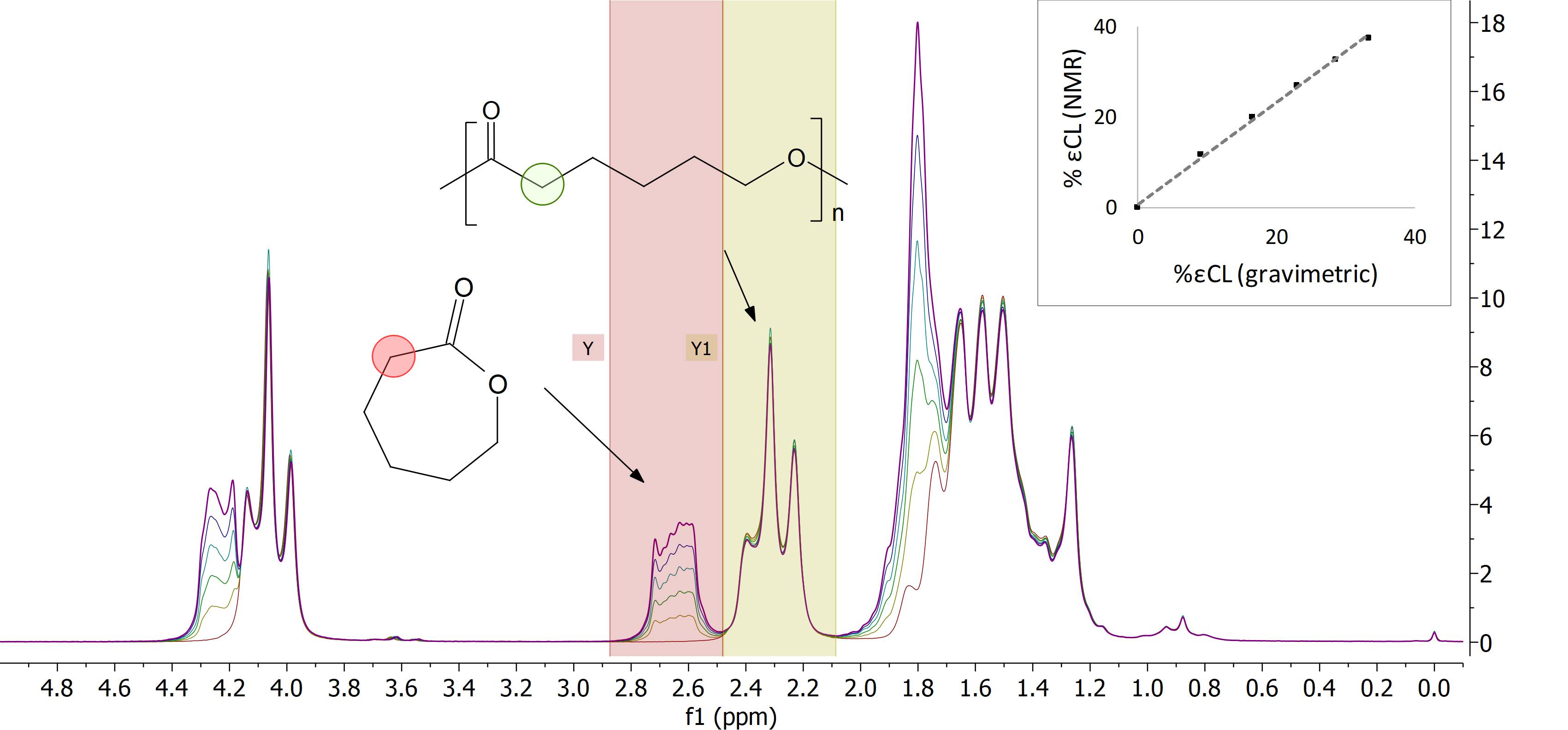
Polymers are an integral part of our everyday lives. With a global production of a about 300 million tonnes per year it is obvious that is very important to understand and being able to control the synthesis process of polymers. Benchtop NMR offers the possibility to follow such synthetic processes online in real time as demonstrated by Nicholas Warrens group from the University in Leeds. In their recent publication in in the journal “Polymer Chemistry” (DOI: 10.1039/C9PY00982E) they follow the conversion of different polymerization reactions in batch and in flow reactors. They investigated the polymerisation of acrylamide and methacrylate monomers in homogenous medium, as well in dispersion. Thanks to the build-in lock system of the Spinsolve spectrometers, deuterated solvents were not required for their study and the presaturation water suppression method allows them to get detailed kinetic information under different conditions.
The method can be extended to a wider range of polymers, as for example polyesters. The plot below shows how benchtop NMR can be used to quantify the monomer content inside a polymer solution. The inset in the graph shows that the monomer content determined by NMR is in excellent agreement with the gravimetrically determined content.